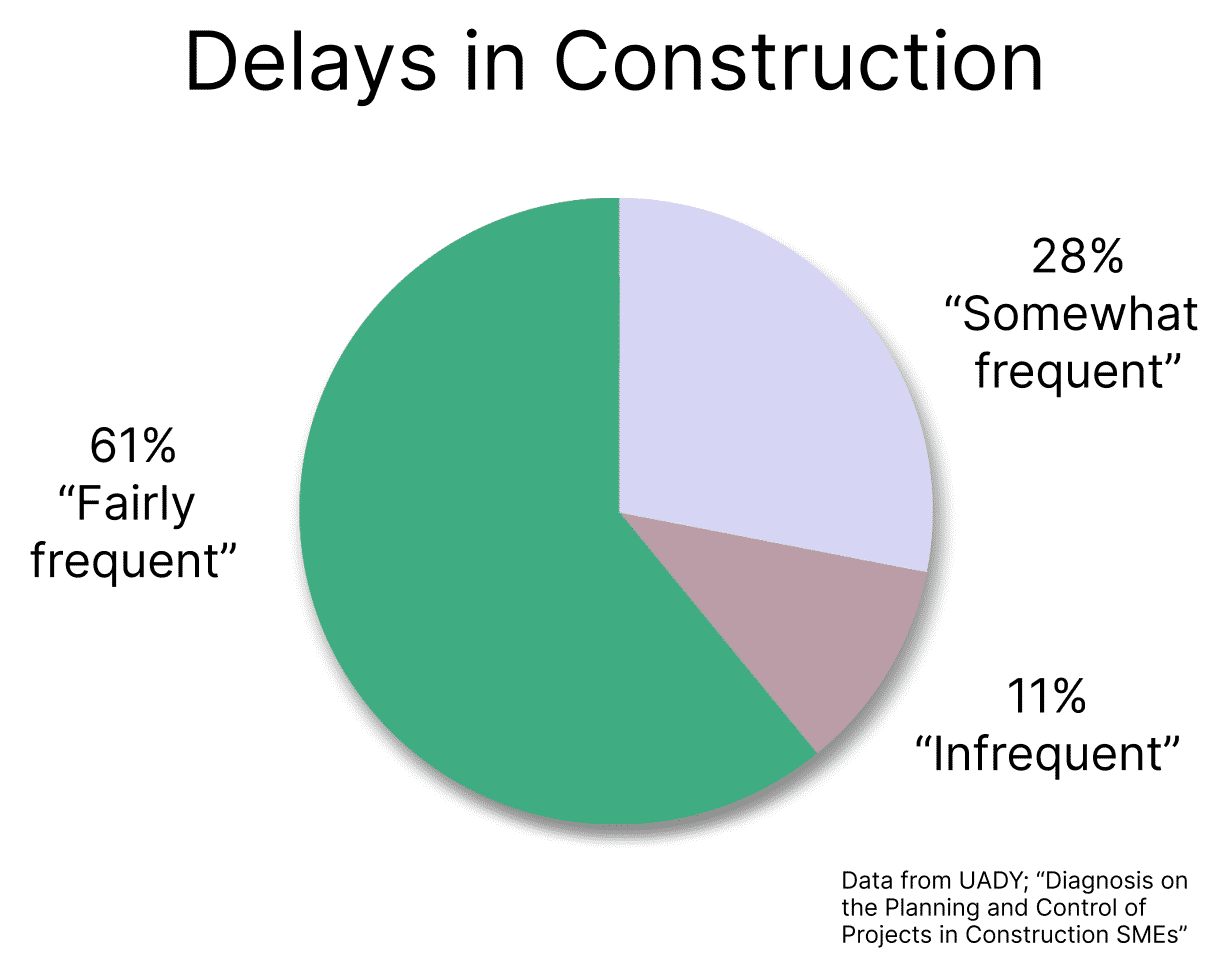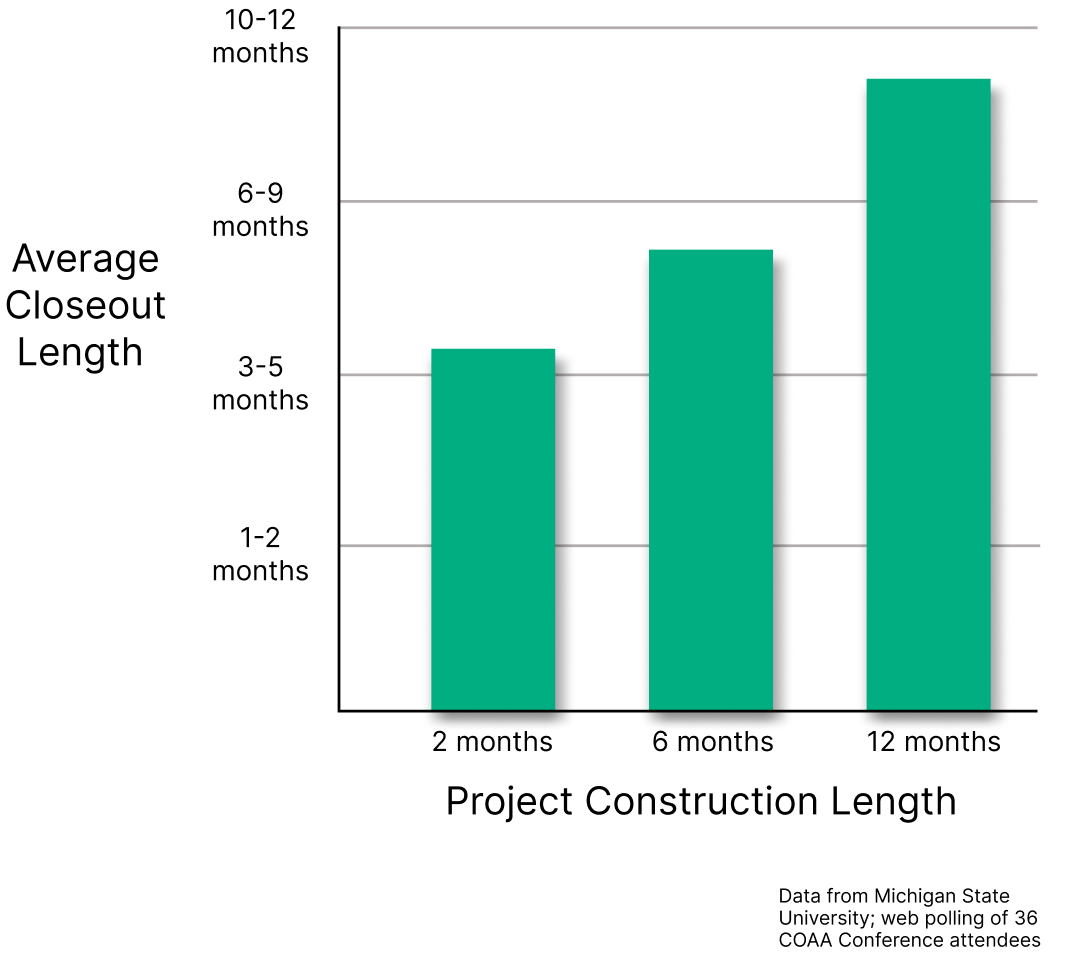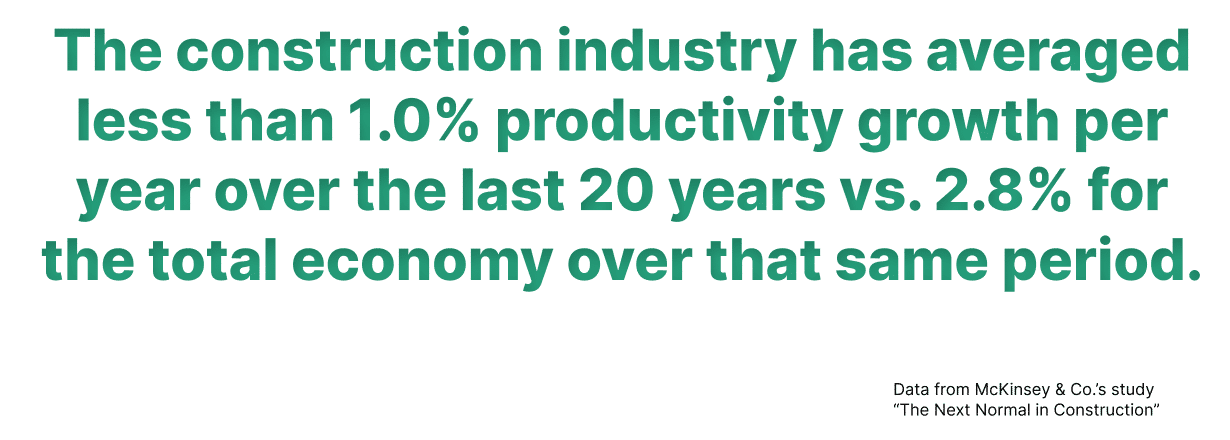
Successful Project Closeout: The Comprehensive Guide
What project closeout is, why it's important, and how to execute it well
March 10, 2021
10 min read
Learnables

Edward Gonzalez
Founder at Buildr

“Project closeout is my favorite phase of construction,” said nobody, at any point, in the history of mankind.
It’s the phase we’d rather not speak of, let alone think about, which is why it’s usually left for the last possible moment. General Contractors must juggle subcontractor follow-up, file and folder organization, Excel sheet accuracy, and turnover package design and building, on top of a myriad of other non-closeout-related duties.
Of course, the GC's juggling act is further compounded with multiple projects concurrently in the pipeline. The more projects in progress, the more pressure there is on accuracy and organization. To call project closeout a nightmare wouldn’t do it justice, and we haven’t even taken into account the time constraints and profit margin percentage points riding on not only executing, but executing well.
Looking at findings from Construction Financial Management Association and McKinsey & Company, a general contractor’s profit margin ranges between 1% and 5% per project before interest and taxes. It should go without saying that such a tight margin dictates microscopic room for error.
By the end of this guide, our hope is that you’ll come away with a couple lessons learned while becoming newly equipped with a gameplan to take on closeout headfirst. Who knows, you might even downgrade it from “nightmare” to “slightly unpleasant dream.”
Before we attack the how, it’d be best to first unpack the what and why.
What is Project Closeout?
Project closeout is the final construction phase of the project lifecycle. It is the collecting of final project documents (sometimes referred to as project deliverables), assembling them into a package, and ultimately presenting that package to the client that requested the project be built. It is also defined as the length of time between substantial completion and the general contractor receiving final payment.
An analysis of 39 projects by MSU found that the average length of closeout was 284 days and final payment to internal closeout was another 247 days for a whopping total average of 531 days. They cite that while seemingly lengthy, these averages are comparable industry-wide for a similar project scope.
A Project Engineer with one of our partners, a General Contractor in the ENR Top 10, explained that their team's closeouts on a 3-year project prior to using Buildr took around a year and a half, with the last 2-3 months "spilling over beyond substantial completion."
Construction project delays are an industry-wide norm, which factors heavily into the length of time it takes for the GC's team to close. Overlong projects coat the runway of document collection and assembly in molasses. Inefficiencies and stoppages beget more paperwork; more paperwork begets a more complicated closeout.

Collection, assembly, and presentation are the three peaks of a mountain climbed by a select few. Successful project closeout isn’t just about executing, but executing well. One must climb the mountain and do it without breaking a sweat. We’ll cover why a bit later.
Document collection
The collection of project deliverables is the first step of closeout.
It’s not as simple as a teacher waiting at the front of the classroom for students to pass in their quizzes. The complexity of a project’s document collection is relative to the project scope. The larger the project, the more facilities there are, and ultimately the more construction documents there are to collect.
Email is the construction industry’s preferred medium of document collection for project closeout. It’s light years more efficient than, say, physical interaction (“I’m going to go collect George’s O&M manual today. Off I go!”), less immediate than a phone call, and more conventional than an IG story tag (hats off to the innovation).
The person tasked with closeout—we’ll call them the Project Manager from here on out—emails every subcontractor that worked on the project with a polite request for the documents that they’re responsible for. Then begins the waiting game.
Once initial document requests are sent, the Project Manager’s diligent organization is paramount. Subcontractors are not incentivized for timely responses. It’s possible, if not likely, that they’re already on to future projects by now. Additionally, subs may need to reach out to members of their teams for documents. The Project Manager is clueless about what’s going on, now two levels above the collecting process (with the GC above them and the owner above them). It’s like an administrative, really boring version of Inception.
The PM must anticipate that 100% of requested documents aren’t going to magically appear in their inbox that afternoon, and formulate a timed strategy for follow-up. A single construction document can take weeks to months to obtain, especially if they require edits. Aside from follow-up, the PM must keep a running project closeout checklist and a space where documents are neatly and descriptively stored.
Assembly of the handover package
It’s that neat and descriptive storage that will provide the launchpad for the Project Manager’s next project closeout peak to climb: assembly.
Once all required documents are in the PM’s possession, they’ll organize them into one cumulative project closeout document, usually referred to as a “handover document,” “handover package," "closeout package," or “turnover package.” Usually a myriad of nicknames implies affection (see also: Shaquille O'Neal), but not this time. The handover package is what will eventually be given to the client. It must be comprehensive, accessible, and without redundancies. Coffee stains are also frowned upon.
Assembly of the handover package takes time and a little bit of graphic design savvy. The project manager has documents of all shapes and sizes that must be categorized and edited together coherently and aesthetically. File sizes must be adjusted individually so that the package as a whole isn’t too bulky—in the physical and digital sense. It’s not uncommon for digital handover packages to be multiple gigabytes large, and for printed handover packages to be a dozen or so 3-ring binders tall.
Presentation to the client
Upon completion of assembly, the final step of project closeout is presenting the handover package to the client. Between General Contractor and client, this is the proverbial “tossing the keys to the sports car.” At long last, the GC’s job is over, and the client can rest assured that the handover package contains all information critical to the continued maintenance of their spanking new facility.
Of course, presenting a package that both satisfies and impresses the client takes a certain skill that now evolves past administrational or graphic design—an ultra-high stakes version of customer service. This is the most important skill of all for one simple reason: giving the client what they want, on top of being available for questions they may have about their new facility, helps to build a better relationship and ensure repeat business between GC and Owner.
Successful project closeout is rare
Truly successful closeout doesn’t happen often, for two primary reasons: too many variables and a lack of project resources. Both can be readily overcome by the contractor that’s ready to take their business to the next level.
Too many variables
Time and cost overruns are extremely common for projects—31% of all projects came within 10% of the budget in the last 3 years according to a report by KPMG. Uncontrollable variables include stoppages, accidents—and of course, we can now include worldwide pandemics. The onset of COVID-19 was an abrupt and cruel reminder of how little control we have.
Perhaps a project team becomes too focused on their current project, and their dedication to properly closing out the last one falters. Maybe some documents are misplaced or incorrect, or it simply takes too long to receive construction documents from every subcontractor.
In a survey of COAA Conference attendees, closeout for projects ranging from $25 million to over $1 billion were examined and projects that took 12 months to complete averaged around a 10-12 month closeout, with one respondent noting, “it takes [us] 2-3 years to closeout a $10 million project.”

A lack of resources
By sheer manpower standards, the construction industry is woefully understaffed. The AGC reported that 80% of contractors struggle to fill positions and there were upwards of 239,000 unfilled positions last year per the Bureau of Labor Statistics. The AGC also suggested most contractors are boosting pay for their crews to incentivize work on the tasks of those they haven’t been able to hire.
The GC might conduct closeout entirely by themselves, or task one or two others to do it. When a project manager has an Excel spreadsheet, a printer, and a thousand other non-closeout-related things on their to-do list, successful closure is difficult to pull off.
From that same COAA survey, 4 of the top 8 organizational factors for slow closure were internal process friction (said 84% of respondents), personnel skill level (78%), inadequate manpower (74% of respondents) and inadequate records (59%). Surveyed contractors noted “a lack of project resources” as the number one reason for slow project closeout.
Why successful project closeout is important
Successful closeout is defined by timeliness and execution. Only when work has been completed, final retainage is released and the general contractor can be paid. This incentivizes the General Contractor to closeout as soon as possible, at occasionally the cost of a thoroughly exceptional process.
A wise GC understands the benefit of bridging timeliness with execution, however, as it is the sound execution of closeout that defines a GC’s personal brand and reputation. Getting paid sooner than later is crucial, but not as crucial as overdelivering to the client and ensuring a better reputation, more money, and ultimately more clients.
Considering how tight profit margins are—per KREO, “Construction profit margins of 1.5% to 2% are normal” and “unlikely to reach 5%”—a general contractor’s closeout success is symbiotic with their overall business success. Profit margins are tied to productivity, and unfortunately the construction industry finds itself stagnant for the past two decades in that area.

Handover is the final touchpoint between client and GC and the last chance to make an impression that leads to repeat business. A solid gameplan from the start extinguishes potential future excuses. With modern technology options, successful project closeout that culminates in an impressive handover package can be conducted at any budget with a strategy that circumvents any drought of resources or plethora of variables.
Historically, the construction industry has performed almost dead last in terms of technology adoption. McKinsey & Company lists construction second to last in digitization of the twenty-two major industries, only in front of Agriculture and hunting. Believe it or not, this is great news for General Contractors who are eager to transform their businesses. Odds are that your competitors aren’t thinking this way, meaning that more of the available profit pool is up for grabs.
How to do Project Closeout: A Detailed Plan and Template
Let’s take a look at four steps that are vital to successful project closeout:
Gameplanning from day one,
Determining client handover requirements,
Configuring a logical workflow, and
Delivering a clean and accessible handover package
Following these steps will not only accelerate closeout and get your project team members paid sooner, but also help execute the handover process to bolster your brand and reputation, ultimately strengthening client relationships and ensuring repeat business.
Think of this plan as a sort of template you can follow to pave a safer path through a particularly treacherous woods. If you have to, imagine the woods from The Blair Witch Project, scary epitaphs dangling from branches and all, except there’s a nice, friendly cement path with water fountains every 50 yards.
Step 1: Gameplanning from Day One
As discussed, a delayed start to project closeout creates complications that make success more difficult than it has to be. Postponing until post-construction creates an added pressure that would not have been there had project closeout been started earlier, namely document requests and following up with subcontractors that are already onto their next projects (not to mention, your project team members onto your next project).
Based on the aforementioned COAA survey, the number one effective strategy proposed by respondents was “consider closeout early, even at the pre-construction stage.”
Implementing a solid gameplan from the very first day on a project (or sooner), and most importantly getting all of your project team members on the same page with your expectations, will save your future self headaches and money not spent on Advil. A divide between jobsite and office isn't inevitable—be proactive and bridge communication and rapport on day one.
Bonus tip: play the soundtrack from Friday Night Lights in the background during your “We’re all in this together,” speech.
Step 2: Determine project handover requirements
Closeout is meaningless if you don’t adhere to the project handover requirements that your client specifically wants. These requirements will vary depending on the type and scale of the project (be it commercial, industrial, residential, retail, office, etc.), the types of technology used during construction, and the complexity of the facilities within the project itself.
Common requirements include punch list items, as-built drawings, O&M manuals, warranties, change order and claim resolutions, and RFIs. O&M (Operations & Maintenance) manuals are vital to your client. They explain procedures for every individual device or system that is built as a small part of the larger project. They’ll include handy and relevant details the client will always need including manufacturer, model number, drawings, safety tips, product life expectancy, and replacement info. Leaving the O&Ms out of your turnover package would be like leaving the M&Ms out of M&M cookies.
Step 3: Configure a streamlined workflow
Once you’ve bridged the goals of jobsite and office teams and determined project requirements, the next step is streamlining workflow where possible.
Many general contractors maintain an Excel spreadsheet to keep track of a project. If you choose this route, make sure it’s synced with Dropbox or some other cloud service to be safe. GCs who’d rather dedicate their man hours elsewhere use software that automatically keeps track of requirements on top of acting as a portal for subcontractors to upload documents.
If your projects are small enough or your team is used to manual project closeout, create a master folder on your computer (again, be sure to cloud sync) that’ll serve as the holding place for all incoming project documents. Label files and subfolders as clearly and succinctly as possible. Rather than waiting till later when file transfer becomes a code-red emergency, convert and shrink file sizes as documents trickle in. Proactive practices like these will make the eventual turnover package assembly less of a pain. Again, GCs who’d prefer against micromanaging conversion and metadata use software that does it for them automatically.
One last workflow streamlining strategy is to maintain and edit a project handover template in real time rather than saving it for whenever you’ve finally obtained every last pesky document. Anticipate claims, disputes, and change orders and the time they’ll inevitably vacuum up. Whether you’re building a massive hyperlinked PDF or a massive stack of 3-ring binders, it’s massively important that you chip away at this undertaking in pieces so that it’s not as overwhelming.
Step 4: Deliver a clean and accessible handover package
The key word here is “accessible.”
For truly successful handover, a General Contractor will want to deliver a closeout package that their client can actually use. The only good that a stack of 3-ring binders does is collect dust in a closet and keep the ink cartridge industry alive and well. A handover PDF is a bit more practical, though for larger projects can be the digital version of the 3-ring binder stack (the dust-collecting, also digital). It’s nice to have, but it can slow down hardware and sometimes be more trouble than it’s worth to open.
In either case, preventive maintenance and warranty issues usually result in the client perusing the turnover package for all of 2.4 seconds before giving the GC a call. Some General Contractors anticipate this result and opt to index and archive final project documents, providing their clients with a portable, lightweight project handover template. The resulting package is searchable, consistent across all future projects, and doubles as a portal to submit and report on warranty claims.
Based on KPMG’s survey of 300 senior leaders in the industry, 70% admitted that their company didn’t have integrated systems or project reporting whatsoever. Don’t let all the data you collect float off into space—give it to your client. This sort of overdelivery not only gives them tangible control over their facility for years to come, it strengthens your brand's trust in a manner that helps ensure repeat business with your client.
FMI's 2020 report Trust Matters: The High Cost of Poor Trust notes that high trust firms are "the most enthusiastic about taking on repeat work with collaborators across the construction ecosystem," while only 37% of construction professionals rated their organization as "a high trust firm." Trust is built when promises are kept. When promises are over-delivered on, well, now we're talking!
Project Closeout, Automated
If there’s one thing to take away from all of this, it’s that project closeout is a climbable mountain. With the wrong strategy and mindset, it can be lengthy, tiresome, and discouraging; all this work could very well result in a turnover package that nobody will ever read. Rejoice in the fact that your competitors similarly feel this way, which means it’s the perfect opportunity to stand apart.
Start strategizing from day one—your future self will thank you, and so will your client. Variables on future projects are inevitable, but with the right gameplan they won’t prove toxic to your workflow. If you’d like to accelerate your closeout, get paid sooner, improve your profit margins, and deliver a clean and accessible handover package that’ll knock your client’s socks off, look no further than Buildr.
Stay in the loop
Seriously, you should sign up to be a construction insider. Everyone will be so jealous of you.